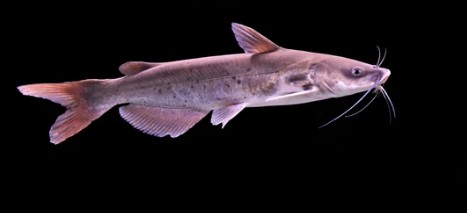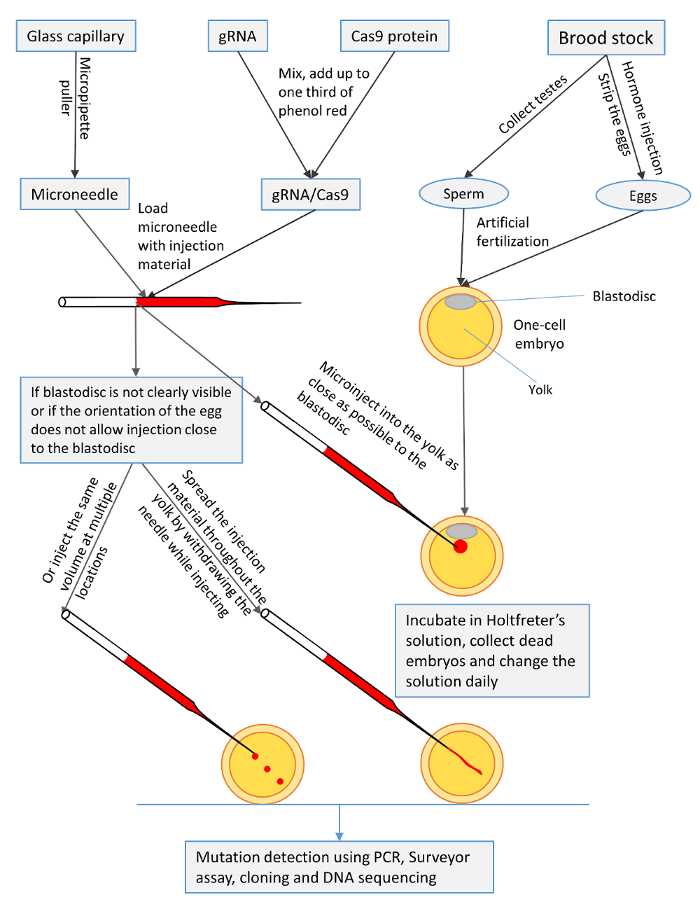Ictalurus punctatus, known as Channel Catfish, is a fish belonging to the catadromous family Catridae, originally from the Central Basin region of the United States, and is now widely introduced in the United States, Canada, China, Mexico, and other countries. The Ictalurus punctatus is also a leading fish for research and commercial purposes.
 Figure 1. The Ictalurus punctatus is on isolated black background. It is a member of the family Ictaluridae and is a popular food in the United States.
Figure 1. The Ictalurus punctatus is on isolated black background. It is a member of the family Ictaluridae and is a popular food in the United States.
Ictalurus punctatus is highly adaptable, fast-growing, and has delicious meat. In addition, Ictalurus punctatus is easy to catch by bait, which is very popular among anglers. The sequencing of the complete genome of Ictalurus punctatus has been completed, which provides more possibilities to study the gene function of Ictalurus punctatus in depth.
Lifeasible can provide high-quality gene editing services for Ictalurus punctatus based on CRISPR/Cas9 and ZFN technology, facilitating scientists to conduct functional genomics research and select new breeds with economically important traits.
CRISPR/Cas9 is a useful technology for gene editing research, capable of targeted editing of genomic DNA sequences to alter gene function. Moreover, the CRISPR/Cas system has higher targeting efficiency and lower cytotoxicity, and the cost of gene editing is lower, which effectively helps fish scientists to complete the study of growth rate, feed conversion rate, hypoxia tolerance, disease resistance, and other essential gene functions.
The muscle growth inhibitor (MSTN) gene plays a role in regulating skeletal muscle mass by activating receptor II (ACVR2). We were able to knock out the MSTN gene in Ictalurus punctatus using CRISPR/Cas9 technology and were able to investigate the role of this gene further. First, we microinjected CRISPR/Cas9 protein into embryos of Ictalurus punctatus, obtained zygotes by artificial insemination, and then introduced the toll/interleukin 1 receptor domain-targeting linker molecule (TICAM 1) gene and rhamnose Guide RNA/Cas9 binding to the lectin (RBL) gene was microinjected into the yolk of single-cell embryos and finally verified by DNA sequencing to ensure gene knockout.
 Figure 2. Steps and procedures for the preparation and microinjection of single-cell embryos of Ictalurus punctatus. (Elaswad, A, et al. 2018)
Figure 2. Steps and procedures for the preparation and microinjection of single-cell embryos of Ictalurus punctatus. (Elaswad, A, et al. 2018)
In addition to CRISPR/Cas9 gene editing tools, ZFN technology can also be applied to Ictalurus punctatus. We have developed an alternative solution for gene editing by double electroporation of zinc finger nucleases. First, we amplified the ZFN plasmid to provide a sufficient amount of electroporation. We prepared sperm cells in a salt solution, electroporated with the plasmid, and then used for fertilization to produce mutant Ictalurus punctatus fry.
Lifeasible has demonstrated through extensive experiments that CRISPR/Cas9 is an efficient tool for editing the Ictalurus punctatus genome. We have built a professional Ictalurus punctatus gene editing technology platform, providing gene editing services including but not limited to gene knockout, gene insertion, gene silencing, etc., which can help our customers to explore the important gene function research of Ictalurus punctatus. For more information or any inquiry request, please contact us.
References
Lifeasible has established a one-stop service platform for plants. In addition to obtaining customized solutions for plant genetic engineering, customers can also conduct follow-up analysis and research on plants through our analysis platform. The analytical services we provide include but are not limited to the following:
STU-CRISPR System Improves Plant Genome Editing Efficiency
April 19, 2024
Application of Exosomes in Facial Beauty
April 12, 2024